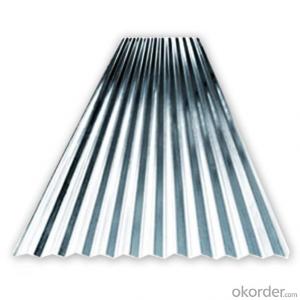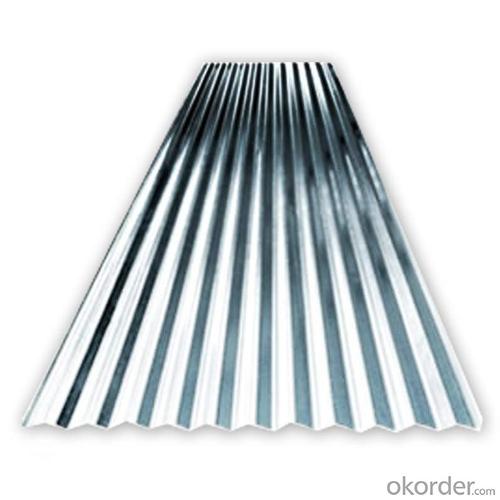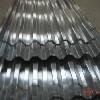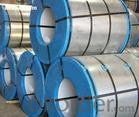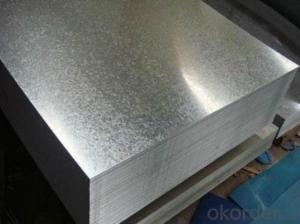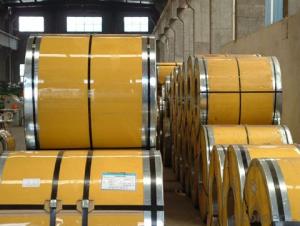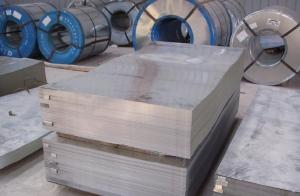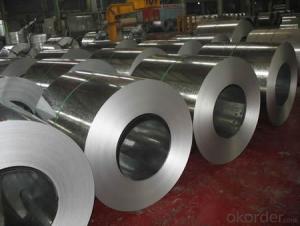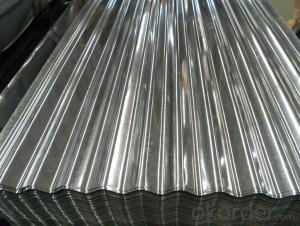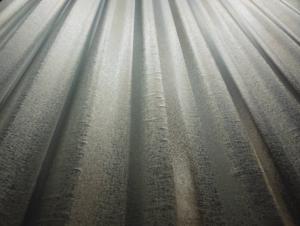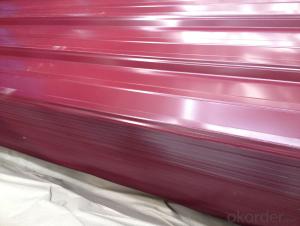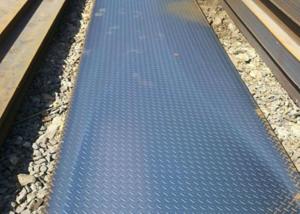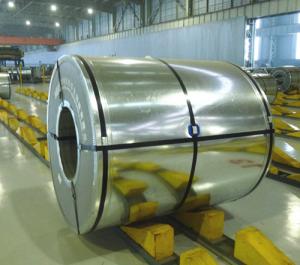Hot dip galvanized steel sheet regular spangle
- Loading Port:
- Shanghai
- Payment Terms:
- TT OR LC
- Min Order Qty:
- 25 m.t.
- Supply Capability:
- 10000 m.t./month
OKorder Service Pledge
OKorder Financial Service
You Might Also Like
Quick Details
| Standard: | ASTM, GB, JIS | Grade: | SGCC. SGCH. DX51D+Z. JIS G3302 | Thickness: | 0.15mm-5.0mm |
| Place of Origin: | China (Mainland) | Brand Name: | CNBM | Type: | Steel Coil |
| Technique: | Cold Rolled | Surface Treatment: | Galvanized | Application: | Roofing sheet and PPGI Base and Building Materials |
| Special Use: | High-strength Steel Plate | Width: | 600mm-1250mm | Length: | Customized |
Packaging & Delivery
| Packaging Details: | Export Packing |
| Delivery Detail: | 30 Days |
Galvanized Steel Coil
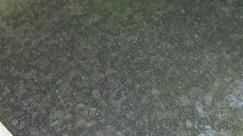

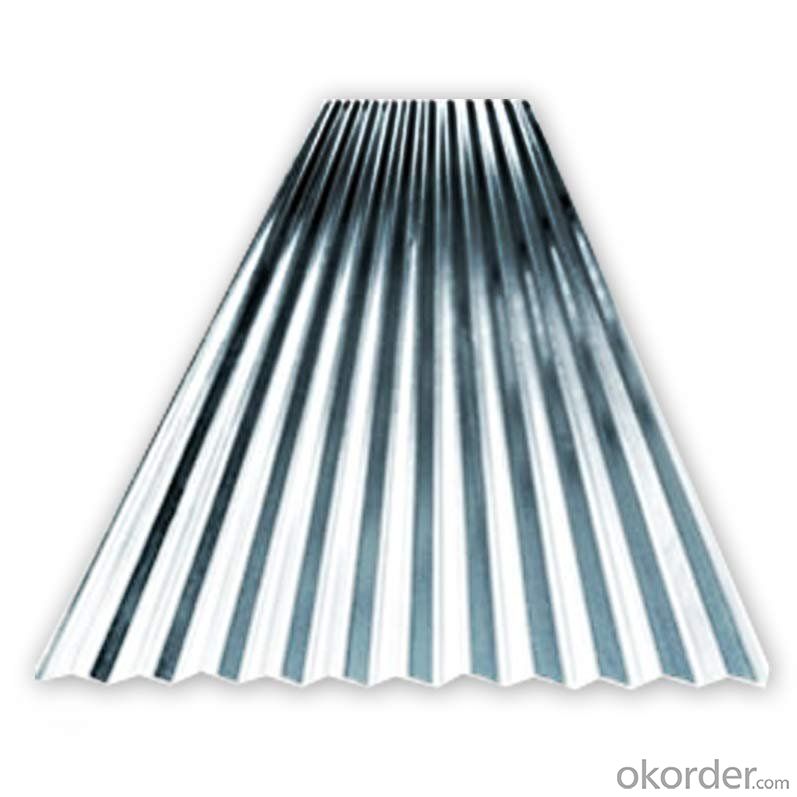
Specifications:
Thickness: 0.13mm TCT up to 5.0mm TCT.
Width: 600mm up to 1250mm.
Zinc Coating: 40-450G/M2.
Chromated, Dry, Skin-passed, Tension Level, Shining. Oiled or Unoiled.
Regular Spangle, minimum Spangle, Large Spangle, Zero Spangle.
Temper: Full Hard (85-95 HRB; G550). Commercial Quality (50-75 HRB; G350).
Coil Weight: 3-6 MT.
Coil ID: 508mm or 610mm.
Shipment: By Bulk or By 20GP Container.
Waterproof Standard Export Packing.
Payment Terms: by T/T or L/C at Sight.
Delivery: 30 Days.
PACKING
4 eye bands and 4 circumferential bands in steel, galvanized metal fluted rings on inner and outer edges, galvanized metal & waterproof paper wall protection disk, galvanized metal & waterproof paper around circumference and bore protection
FAQ
We have organized several common questions for our clients,may help you sincerely:
1)How to guarantee the quality of the products?
We have established the international advanced quality management system,every link from raw material to final product we have strict quality test;We resolutely put an end to unqualified products flowing into the market. At the same time, we will provide necessary follow-up service assurance.
2)How long can we receive the product after purchase?
In the purchase of product within 20-25 days, we will arrange the factory delivery as soon as possible. The pacific time of receiving is related to the state and position of customers. Commonly 15 to 30 days can be served.
3)Do you have necessary certificate or inspection to make sure we can import smoothly?
Syringes are CE,FDA approved. And we supplied main nations in the world.
- Q: How do you cut a steel sheet?
- To cut a steel sheet, you typically use power tools such as a plasma cutter, laser cutter, or angle grinder equipped with a cutting disc designed for metal. These tools are capable of generating high heat and precision to make clean cuts through the tough steel material. Safety precautions, like wearing protective gear and ensuring a stable work surface, are crucial when working with power tools and cutting steel sheets.
- Q: How are steel sheets coated for corrosion resistance?
- Steel sheets are commonly coated for corrosion resistance using a process called galvanization. Galvanization involves applying a layer of zinc to the surface of the steel sheet. This can be done through either hot-dip galvanization or electro-galvanization. In hot-dip galvanization, the steel sheet is immersed in a bath of molten zinc, which adheres to the surface of the steel through a metallurgical reaction. The zinc coating forms a protective barrier that prevents moisture and oxygen from reaching the steel, thus inhibiting corrosion. Electro-galvanization, on the other hand, involves passing an electric current through the steel sheet while it is immersed in a zinc electrolyte solution. The electric current causes the zinc ions in the solution to be attracted to the steel surface, forming a thin layer of zinc coating. This method is typically used for thinner steel sheets or when a more precise and controlled coating thickness is required. Both hot-dip galvanization and electro-galvanization provide effective corrosion resistance to steel sheets. The zinc coating acts as a sacrificial layer, meaning that it corrodes first before the steel underneath. This sacrificial protection extends the lifespan of the steel sheet and prevents rust from forming. Additionally, the zinc coating can also provide a decorative finish, making it suitable for both practical and aesthetic purposes. Overall, the process of galvanization is a widely used and effective method for coating steel sheets to enhance their corrosion resistance and durability.
- Q: What are the weight calculations for steel sheets?
- The weight calculations for steel sheets depend on their dimensions, thickness, and specific gravity. The formula used to calculate the weight of a steel sheet is: weight = length × width × thickness × specific gravity. The specific gravity of steel is typically around 7.85.
- Q: What are the different types of finishes available for steel sheets?
- There are several types of finishes available for steel sheets, including mill finish, brushed finish, mirror finish, galvanized finish, and painted finish.
- Q: Can the steel sheets be painted or coated?
- Yes, steel sheets can be painted or coated. Painting or coating steel sheets is a common practice in various industries to enhance the appearance, protect against corrosion, and improve durability. The steel surface should be properly cleaned and prepared before applying any paint or coating to ensure proper adhesion. Different types of paints or coatings can be used depending on the desired finish, environmental conditions, and the specific application. It is important to select the appropriate type of paint or coating that is compatible with the steel substrate and can withstand the intended use and exposure to chemicals, moisture, UV radiation, or other factors that may affect the performance and longevity of the coating.
- Q: What are the color options for steel sheets?
- The color options for steel sheets can vary, but some common choices include silver, black, white, gray, and various shades of metallic colors such as bronze or copper. Additionally, steel sheets can also be painted or coated with a variety of colors to suit specific preferences or design requirements.
- Q: Can steel sheets be used as a decorative material?
- Yes, steel sheets can be used as a decorative material. Due to their durability, versatility, and sleek appearance, steel sheets are often used in architectural and interior design projects to create modern and industrial aesthetics. They can be used for various applications such as wall cladding, countertops, furniture, and decorative accents, offering a contemporary and unique look to any space.
- Q: Are the steel sheets suitable for electrical enclosures?
- Yes, steel sheets are suitable for electrical enclosures. Steel is a highly durable and strong material that provides excellent protection for electrical components. It is resistant to impact, corrosion, and high temperatures, making it an ideal choice for enclosures that house sensitive electrical equipment. Additionally, steel sheets can be easily fabricated and customized to meet specific design requirements, ensuring a perfect fit for the electrical enclosure. Overall, steel sheets offer the necessary strength, durability, and protection needed to house electrical components effectively.
- Q: Can steel sheets be used in the construction industry?
- Yes, steel sheets can be used in the construction industry. They are commonly used for various applications such as roofing, siding, flooring, and structural components due to their strength, durability, and resistance to fire and corrosion.
- Q: What is the difference between hot-rolled and cold-rolled steel sheets?
- The manufacturing process and resulting characteristics of steel sheets differ between hot-rolled and cold-rolled varieties. Hot-rolled steel sheets are produced by heating a large steel slab and passing it through high-temperature rollers. This allows for easy shaping and forming into various sizes and thicknesses. The elevated temperature also removes any residual stress in the steel, making it more flexible and moldable. Consequently, hot-rolled steel sheets possess a rougher surface finish and may exhibit a thin oxide layer called scale. However, they are generally less expensive and come in a wider range of sizes. In contrast, cold-rolled steel sheets are created by cooling down the hot-rolled steel and passing it through rollers at room temperature. This process not only reduces the steel's thickness but also enhances its surface finish and dimensional accuracy. Cold-rolling gives the steel sheets a smooth and shiny appearance, making them suitable for applications where aesthetics matter. Additionally, cold-rolling improves the steel's strength and hardness, making it more appropriate for high-stress uses. However, cold-rolled steel sheets are typically more costly due to the additional processing involved. In summary, hot-rolled steel sheets offer greater formability and lower cost, but have a rougher surface finish and may exhibit scale. On the other hand, cold-rolled steel sheets have superior surface finish, dimensional accuracy, and strength, but are pricier. Choosing between hot-rolled and cold-rolled steel sheets depends on the specific requirements of the application, including desired surface finish, strength, and cost considerations.
Send your message to us
Hot dip galvanized steel sheet regular spangle
- Loading Port:
- Shanghai
- Payment Terms:
- TT OR LC
- Min Order Qty:
- 25 m.t.
- Supply Capability:
- 10000 m.t./month
OKorder Service Pledge
OKorder Financial Service
Similar products
Hot products
Hot Searches
Related keywords
